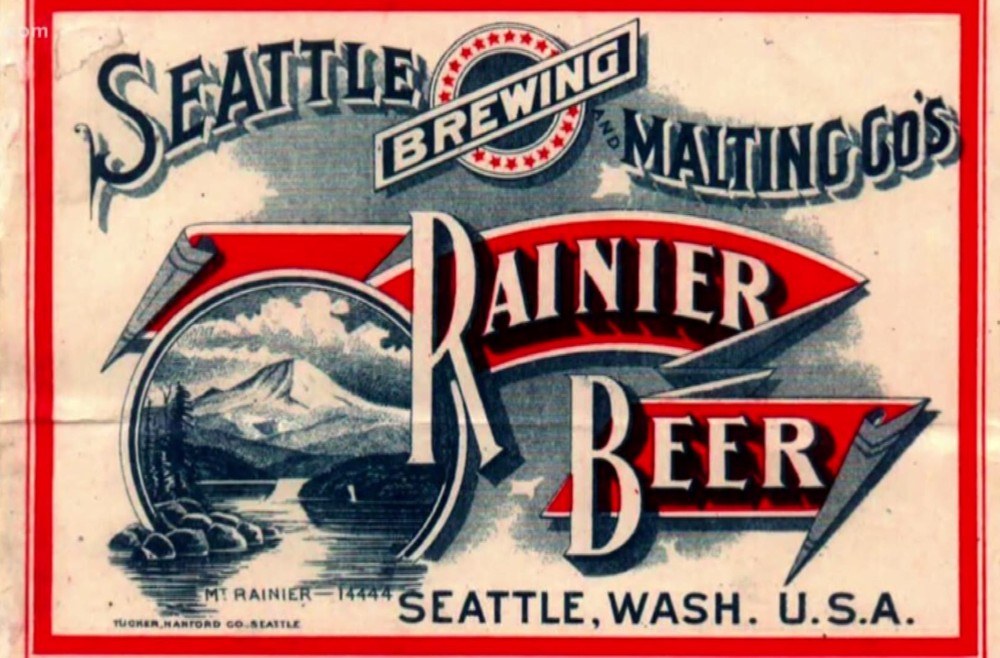Our booming Far Corner has enjoyed special advantages: a deep-water port; lots of natural resources; proximity to the remainder of the world; a constantly growing, highly educated, and diverse population; clean fresh water and air; a major research university anchoring biomedicine and technology; and a wide variety of scenic wonders.
The above factors helped attract and keep commercial interests alive and well-diversified. As a job-factory, except for a few brief economic bumps, the Pacific Northwest has long provided employment opportunities, with economic saviors regularly coming to town.
Arthur A. Denny surveyed Seattle’s shore, proving that Elliott Bay could support a variety of shipping and manufacturing establishments, including the Seattle Gas Company – later known as Washington Natural Gas. Soon after Denny’s efforts, Henry Yesler and his Seattle waterfront wharf and saw mill jump-started commercial activity. The logs skidding down Seattle’s seven hills to Yesler’s sawmill helped create a waterfront with world class facilities.
Jacob Furth saw the need for a bank, becoming the first president of Seattle National Bank, later helping build streetcar lines and electric light facilities.
Robert Moran arrived, creating a modest waterfront machine shop that grew into a major shipyard. His civic interests won him the Seattle mayorality (during the Great Fire of 1889). Later he built an opulent “summer residence” called Rosario on Orcas Island, thereby opening the door to tourism on a large scale.
The Seattle Post-Intelligencer newspaper, originally known as the Puget Sound Gazette, was founded in Olympia and became Puget Sound’s oldest continuously operating business.
Similar to Jacob Furth, Dexter Horton started a small bank called Philips, Horton and Company, which eventually grew into what we knew as BankAmerica Corporation. King County’s impressive Harborview Medical Center (now a University of Washington facility) began in 1877 as a poor farm to assist indigent and ill residents. Seattle’s Providence Hospital also grew from poor farm roots.
Argens Safe and Lock Company, still operating near Pioneer Square, opened in 1880, and may be the oldest family-owned Puget Sound business. Chevron, USA, Incorporated, began life in 1886 as Pacific Coast Oil Company. The 1897 Klondike Gold Rush caused its business to boom. George Omar Guy “accidently” invented the ice cream soda in 1872. His first drug store, called “G.O. Guy’s,” was established at Main and Occidental Streets in Pioneer Square.
Rainier Brewing Company started in 1878 on Seattle’s Airport Way. Local Washington State prohibition laws were enacted in 1916, years before national Prohibition was passed, causing Rainier to brew its elixir in San Francisco, California. After repeal of national Prohibition, Rainier returned to Seattle, spawning a professional baseball club (the Seattle Rainiers) along the way.
In 1883, Larsen Extract Company opened for business at Front (now First) Street and Madison Avenue. Its original famous product, called Mapleine, was a maple syrup substitute. Today the company is named Crescent Foods, Inc.
Burlington Northern is a consolidation of five major railroads. The original company was founded in 1893 by James J. Hill of the Great Northern. Hill liked the Pacific Northwest, choosing Seattle as his western terminus.
Two Seattle law firms may lay claim to being the oldest in Puget Sound country. In 1883, Harold Preston was a founding partner in the old Pioneer Building, Pioneer Square. (Writer Mary McCarthy and her actor brother Kevin McCarthy were raised in Seattle by their Preston grandparents.) The other “oldest” law firm, Schweppe Krug and Tausend, traces its roots to 1879.
Tacoma’s Foss Maritime Company started in 1889 as Foss Boathouse. Thea and Andrew Foss rented rowboats, then moved into the tug business. (Thea would become famous as a model for “Tugboat Annie” stories.)
Howard S. Wright Construction built Port Townsend homes in 1885. Today it is known for its famous landmarks: Seattle’s Northgate, the nation’s first shopping mall; the Seattle Space Needle; and Children’s Orthopedic Hospital.
Banking continued as an important factor in Puget Sound commercial growth. For example, U.S. Bank of Washington grew from PeoplesBank and Old National Bank (1889). The names of Bailey Gatzert, Jacob Furth, Arthur Denny, and Joshua Green are associated with its several lives. Another “oldest” bank is Washington Mutual, founded in 1889.
George H. Bartell, Sr. started his chain of drug stores in 1890. At the Lake Washington Pharmacy, 29th and Jackson, Seattle, Bartell first mixed his own medicines and food extracts.
The Bon Marche was founded by Edward Nordhoff at the corner of First Avenue and Cedar Street, in 1890, some distance north of downtown. Edward died at a relatively young age, but his wife Josephine took over and turned the business into Seattle’s first premier department store.
And finally, Merchant’s Cafe at 109 Yesler Way sports a sign out front proclaiming it to be the oldest restaurant in Seattle. Founded in 1890 as Gallagher and Chambers Saloon, it sported one of Seattle’s first “tobacco counters.” Early drinkers were required by a local blue law to buy food with their refreshment. Merchants then placed a single sandwich on the bar, each customer paying 15 cents for that victual while ordering his beer. The poor sandwich, growing staler by the hour, was pushed up and down the bar in case a liquor inspector dropped by.
